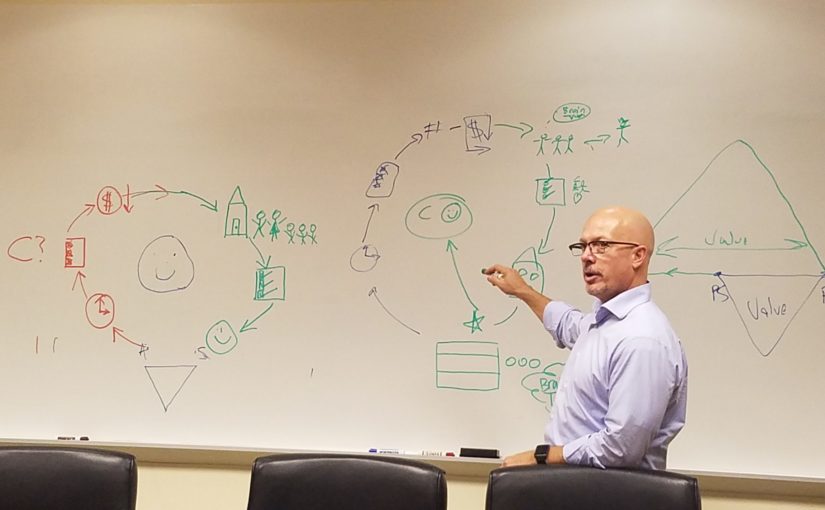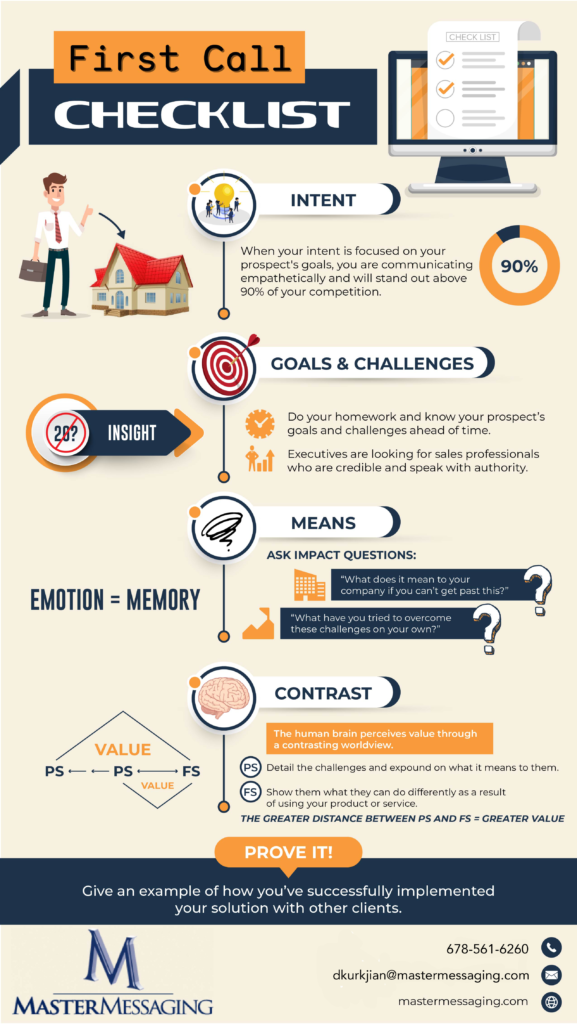Increasing revenue and profitability may be difficult but are not complicated.
The simplest approach with the least risk involves elevating conversion rates, lead volume, or both without increasing your sales costs.
By elevating conversion rates, lead volume, or both without increasing costs of selling, revenue and profits quickly grow. The simplicity can get lost in the haze of the latest, greatest business metrics. You simply need to close more sales while maintaining costs by:
- Converting prospects to customers at a higher rate
- Reaching more prospects
- Not adding additional salaries or solution subscription costs
Volumes have been written on keeping costs under control and that isn’t the focus of this article. We’ll focus this article on proven strategies that lift lead volume and conversion rates in the sales cycle.
INCREASING LEAD VOLUME
There are many ways to increase lead volume, and the experts agree that a holistic, multi pronged approach works best. Organizations today that generate significant lead volume are doing so through a variety of means, platforms and approaches that include:
- Cold calling campaigns (phone)
- Email campaigns (automated cadences/sequences)
- Video campaigns (Vidyard/Videolicious)
- Social interaction (LinkedIn, Twitter, Facebook)
- Contact Campaigns (3D objects delivered to your prospect)
The verdict is in:
Phone prospecting ONLY isn’t as effective as a “combo” approach that includes phone, email and social.
Phone prospecting ONLY isn’t as effective as a “combo” approach that includes phone, email and social. (Like the one encouraged by Tony Hughes, in his book Combo Prospecting). Sophisticated sales teams are using any number of combinations to get their prospects to take that initial call, and it’s now taking 7-13 “touches” to get your prospect to say yes to a first meeting.
Sales leaders like John Barrows speak to the structure and format of these outreaches in depth, and Chris Orlob and the team at Gong.io have released some incredible insights that speak to what’s working and NOT working in outbound outreach.
Our approach is similar and starts with an in-depth understanding of your Ideal Client Profile (ICP). Specifically, start by finding out what they are trying to accomplish (goals) and what they are challenged with (challenges).
Then, detail how your prospect can overcome their specific challenges and achieve their goals uniquely through your product/service.
Outreach attempts fail when they are product or feature focused instead of client focused.Long, boring bulleted emails about your product specs or run-on voicemails that detail how long you’ve been in business rarely get a client to say “Yes” to a first meeting.Outreach attempts fail when they are product or feature focused instead of client focused.
Part of this is due to the proliferation of powerful sales and marketing automation tools and the ease of which sales development professionals can “spam” huge lists with templated emails and voice messages. Don’t get me wrong, tools like Outreach and Hubspot are amazing, but as Spider Man learned, “With great power, comes great responsibility”.
Business development reps are learning that a personalized approach to outreach nets more initial meetings than simply blasting a contact list with vague generalizations. Companies like Drift have developed incredible capabilities around a new approach to sales they call “Conversational Marketing”. Put simply, make it easy for your buyer to get the information they need to purchase, on their own.
A POWERFUL LIST-BUILDING COMBO
We and several of our clients have benefitted from a very targeted approach to increasing lead volume using little more than LinkedIn Navigator and a contact info grabbing tool like LeadIQ. The way to leverage these tools in your outreach is simple:
- Build a targeted list in LinkedIn Navigator
- Gather their contact info using LeadIQ
LinkedIn Navigator allows you to hyper segment your outreach by Geography, Industry, Employee count and Title/Persona. Mix that with a solid boolean search for titles and you get a very detailed list of the contacts most likely to do business with you.
Save that search and then use LeadIQ to gather contact data including work/personal emails as well as work/personal phone info. Now, you’ve got everything you need to target your ICP with a multi touch campaign that utilizes phone, email and social platforms.
Then, create phone, voicemail and email scripts that highlight the BENEFIT your prospect will receive as a result of doing business with you. Use case studies and customer testimonial to paint a picture of what your prospect can expect by engaging you and prospects will respond.
Use case studies and customer testimonial to paint a picture of what your prospect can expect by engaging you and prospects will respond.
Keep the volume of information low, but highlight the value of your product/service using a contrasting worldview in every communication you have with your prospects (this is your world WITHOUT our product immediately contrasted with this is your world WITH our product).
INCREASING LEAD CONVERSION RATES
If you had to make a choice between increasing lead volume or lead conversion, what would you choose? Certainly, with more opportunities to sell, you could impact revenue by increasing lead volume… right?
Not so fast.
If your conversion rates are low and you have difficulty converting your ICP to a paying customer, take a step back and look at your conversion rates.
You can identify your conversion rates at each stage of your sales process in your CRM by implementing a strategy like the one advocated here using Salesforce.
If outreach to your ICP is targeted like the one encouraged above, there is no reason to have low conversion rates. They have a problem, and you can solve it. If you faithfully communicate value at every step of the sales process, you should be converting many of them to customers!
HOW DO YOU DO THAT?
More often than not, sales teams with low conversion rates have them because they employ an outdated inquisition style approach early in their discovery process or they are “winging it” on that first call. Typically their sales conversations are heavy on company info (how long we’ve been in business, who we work with, etc.) or product features (long winded, boring technical demos)
HOT TIP: Your ICP doesn’t care about your company or product. They ONLY care about what your company/product can do for THEM. They enter into every sales conversation silently asking the question, “What’s in it for ME?” If you don’t directly answer that question, it’s no wonder your conversion rates are low.
Your ICP doesn’t care about your company or product. They ONLY care about what your company/product can do for THEM.
Sales teams that articulate VALUE do so by religiously communicating how your prospect will be better off as a result of using their product/service.And this is the primary reason so many great sales organizations with great products and services struggle to lift their conversion rates: Crafting a conversation that communicates high value from your prospect’s point of view TAKES TIME.
WHAT DOES IT MEAN?
You have to build a conversation for every persona you are selling to. Your product/service doesn’t change, but what it means is completely different to each persona you speak with.
If you are selling to a CEO, a conversation about ease of use will mean almost nothing. Likewise, if you are talking to an end user, focusing the conversation exclusively around capturing market share or increasing shareholder value will totally go over their head.
Build a conversation that connects with your target persona using these steps:
- What are they trying to achieve? (Goals)
- What challenges do they face that keep them from their goals? (Challenges)
- How can you uniquely help them overcome their challenges to achieve their goals? (Uniqueness)
This is WHY they should engage you. Then, and only then are you free to talk about HOW your product/service works and WHO it has worked for in the past.
Think about it from your prospect’s point of view: Why would they care what your product can do if they aren’t convinced that it can help THEM? Some of the best tools on the market won’t work for me based on our company size. It doesn’t matter how good that product works if they don’t have an offering for small sales teams!
HERE’S THE GOOD NEWS
By leveraging these techniques to increase lead volume, you’ll get more opportunities to sell. By leveraging these techniques to increase lead conversion rates, more of your prospects will convert to paying customers.
The effect?
LIFTING REVENUE. Which is really the name of the game, isn’t it?
***
I would love to hear your feedback! Please like, share & comment.
***
Most business owners have no extra time to devote to sales coaching. This is where MasterMessaging steps in and excels. We optimize your sales teams’ conversion rates, your lead volume, or both for less than the costs of a single administrative hire. The impact on your sales is significant and sustainable, continuing for years with no ongoing costs.
Our custom messaging solutions are strategically scripted, cadenced, and executed to increase conversion rates for maximum impact on your company’s revenue and profits. If needed we can also increase lead volume. Our system fits seamlessly with your existing sales process to ensure successful adoption & smooth rollout throughout your entire organization. Our solutions are high impact, low risk, minimally invasive, and integrate into your existing sales efforts.
Call: 678-561-6260, Email: dkurkjian@mastermessaging.com or instant message David Kurkjian on LinkedIn to start the conversation.




